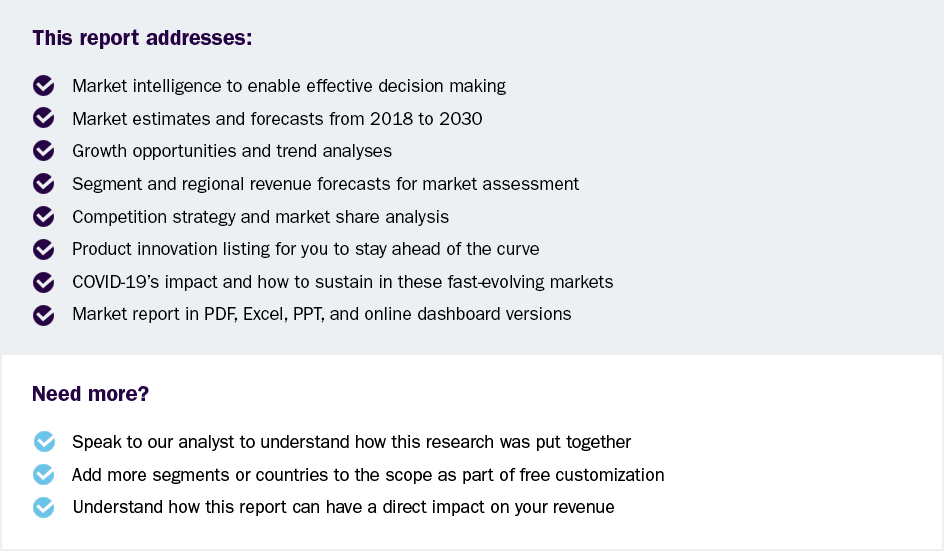Potato Starch Market Size To Reach $4.79 Billion By 2030
Potato Starch Market Growth & Trends
The global potato starch market size is expected to reach USD 4.79 billion by 2030, registering a CAGR of 4.7% from 2024 to 2030, according to a new report by Grand View Research, Inc. As a significant ingredient in the food and beverage industry, potato starch is a thickening and binding agent, contributing to the texture and consistency of various products. The market growth may also be fueled by the rising popularity of gluten-free alternatives, as potato starch is a naturally gluten-free option, catering to the dietary preferences of an expanding consumer base. The industrial applications of potato starch, such as in the production of adhesives, textiles, and pharmaceuticals, are contributing to its increasing demand.
Industries continually explore sustainable and eco-friendly alternatives; potato starch, a renewable resource, aligns with these environmental considerations. Moreover, the high demand for gluten-free alternatives supports market growth. With an increasing prevalence of gluten-related sensitivities and a broader cultural shift towards healthier dietary choices, potato starch emerges as a viable solution for manufacturers seeking to cater to this growing consumer base. Since potato starch is gluten-free, it serves as an attractive ingredient for various applications, ranging from baked goods to processed foods. The increasing environmental consciousness among consumers and stakeholders in the market has led to a significant emphasis on sustainable sourcing practices.
This shift reflects a broader global awareness of the environmental impact of agricultural and industrial processes, prompting a reevaluation of traditional practices in favor of more eco-friendly alternatives. Adopting organic farming practices is a notable component of sustainable sourcing within the market. Organic farming eschews synthetic chemicals, focusing on natural methods to enhance soil fertility and reduce environmental impact. Potato farmers embracing organic cultivation methods contribute to producing organic potato starch, meeting consumers' demand for products free from synthetic additives. Certification processes, such as those provided by organic standards organizations, further assure consumers and industry stakeholders of the adherence to sustainable agricultural practices.
According to Starch Europe, the EU potato starch value chain is committed to sustainability in line with the Green Deal. The sector aims to remain globally competitive while ensuring a sustainable supply of high-quality ingredients by identifying key parameters for success, including predictability, innovation, continuous improvement, and consumer involvement. However, challenges arise in reducing chemical pesticides, with concerns about market disruption and impacts on farmers' income. The statement emphasizes the need for science-supported alternatives to maintain stability and highlights the sector's dedication to responsible practices and continuous improvement in the face of evolving environmental goals.
 Request a free sample copy or view report summary: Potato Starch Market Report
Request a free sample copy or view report summary: Potato Starch Market Report
Potato Starch Market Report Highlights
-
The native type segment is expected to grow at a CAGR of 5.1% from 2024 to 2030. This robust growth underscores the increasing demand and recognition of native potato starch in various industries. The growth trajectory can be attributed to rising consumer preference for natural and minimally processed products
-
The organic nature segment is expected to grow at a CAGR of 3.7% from 2024 to 2030. As consumers prioritize health and environmental considerations, the market for organic alternatives gains traction. The growth is further propelled by the versatility of organic potato starch, meeting the demands of not only the food industry but also expanding into non-food sectors such as cosmetics and pharmaceuticals
-
The food & beverage end-use segment is expected to grow at a CAGR of 5.0% from 2024 to 2030 owing to increased product demand in the F&B sector. Potato starch, known for its versatile functional properties, is a sought-after ingredient in various food applications. Its role as a thickening, binding, and stabilizing agent makes it valuable in the formulation of processed foods, sauces, soups, and bakery products
-
Asia Pacific is expected to grow at a CAGR of 6.0% from 2024 to 2030 due to the region's rising population, high disposable incomes, and a shift towards Western dietary preferences, all of which drive the demand for processed and convenience foods where potato starch is commonly used
Potato Starch Market Segmentation
Grand View Research has segmented the global potato starch market on the basis of type, nature, end-use industry, and region:
Potato Starch Type Outlook (Revenue, USD Million, 2018 - 2030)
-
Modified
-
Native
Potato Starch Nature Outlook (Revenue, USD Million, 2018 - 2030)
-
Conventional
-
Organic
Potato Starch End-use Industry Outlook (Revenue, USD Million, 2018 - 2030)
-
Food & Beverages
-
Paper
-
Pharmaceutical & Chemical
-
Others
Potato Starch Regional Outlook (Revenue, USD Million, 2018 - 2030)
-
North America
-
U.S.
-
Canada
-
Mexico
-
-
Europe
-
UK
-
France
-
Germany
-
Spain
-
Italy
-
-
Asia Pacific
-
China
-
Japan
-
Australia & New Zealand
-
South Korea
-
India
-
-
Central & South America
-
Brazil
-
-
Middle East & Africa
-
South Africa
-
List of Key Players of Potato Starch Market
-
Emsland Group
-
Cargill inc
-
Ingredion Incorporated
-
Novidon B.V.
-
Ettlinger Corporation
-
ADM
-
Royal Ingredients Group B.V.
-
PEPEES Group
-
KMC
-
Roquette Frères

